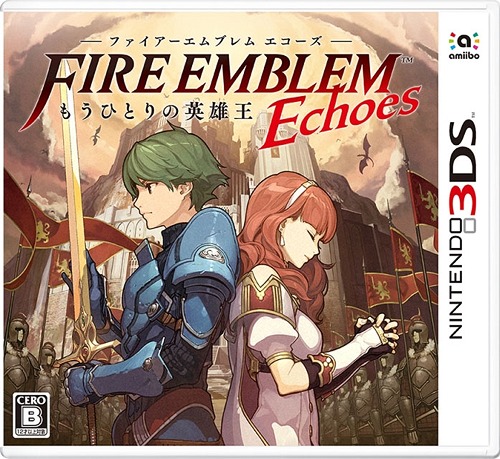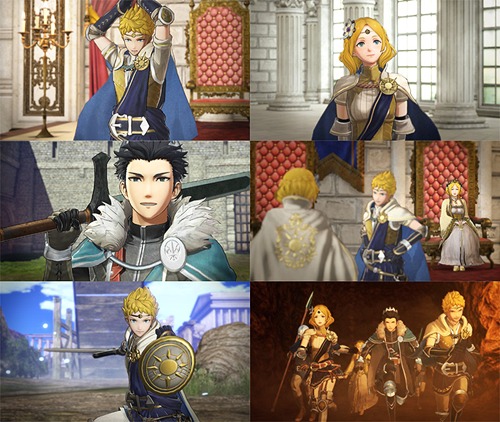
Even with newfound popularity with a mainstream audience, Fire Emblem still had a few issues to resolve with its longtime fanbase. While series vets could appreciate the many Quality of Life features added with each new release, it felt like the series was slowly moving away from the grounded medieval warfare drama and more into anime melodrama.
So, let’s take a look at the steps Intelligent Systems took to rectify complaints and fully bridge the gap between old and new fans alike!
Echoes of an Age Past
At the time of Fire Emblem Echoes: Shadow of Valentia’s announcement, it seemed like an odd choice for a remake. Fire Emblem Gaiden has something of a reputation among the Fire Emblem fanbase as the odd duck of the family. It kept the same turn-based gameplay of the original game, but also added in a dungeon system to make it feel like a contemporary RPG of the era while also simplifying the mechanics even further.
Yet, underneath Gaiden’s numerous issues, the Intelligent Systems of the modern-day recognized that there were some good ideas hidden within. Nakanishi Kenta—director of Fire Emblem: Fates—mentioned that he had always been a fan of Gaiden and really wanted to bring more attention to that particular entry in the franchise. Even with the minimal story, he felt as if there was something that could be developed with the conflict between Celica and Alm. There was a lot story-wise that could be expanded on, and they could use the opportunity to experiment with the gameplay.
Plus, past Fire Emblem games had the recurring issue of failing to strike while the iron was hot, and Fates was at hot as the series had ever been. Intelligent Systems already had faced issues getting ready for new technology in the past, so there was no way that the company was going to get a Fire Emblem game ready for release for the Switch so soon. Something was needed to fill in the gaps while people awaited the next mainline entry, and they could at least get a 3DS game ready in the meanwhile. With the Switch on the way, long-time fans would be upset if one of their favorites like Genealogy of the Holy War or Path of Radiance got stuck with a remake on outdated console. But Gaiden? No one cared about that game in the first place. In fact, they could use the release as an opportunity to create a branding for future remakes if they decided to proceed with the “Echoes” label.
Shadows of Valentia was not exactly a smash hit for the company, but then we can’t imagine they expected it to be. Sales for the title were about on par with the DS remakes in Japan, but Nintendo mentioned they were at least quite satisfied with the international sales. More importantly, though, it turned out to regain a lot of trust with the fanbase. The return to the series’ more conflict-driven story-telling and significantly toning down the pairing mechanics proved to be a big hit with past fans. It went a long way in restoring confidence that Intelligent Systems might still be listening to their complaints.
The Koei-Tecmo Collaboration
Right around the time that Echoes went into development, Nintendo formed a relationship with another studio known for its deep roots with strategy games. They had already signed on Koei-Tecmo to develop Hyrule Warriors—a crossover between Legend of Zelda and Dynasty Warriors. During the development of the 3DS port of Hyrule Warriors, Koei-Tecmo got the idea to request a Fire Emblem crossover. After all, a Fire Emblem/Dynasty Warriors crossover had been long-requested by fans, Nintendo was extremely pleased with the success of Hyrule Warriors, and Nintendo needed more unique and diverse software to make their upcoming Switch console an exciting prospect for consumers. Fire Emblem Warriors got a greenlight without much convincing.
While overall sales of Fire Emblem Warriors were strong (Koei-Tecmo reports that between the Switch and 3DS versions the title has broken 1 million in sales), what’s really important about this collaboration is how it joined Intelligent Systems and Koei-Tecmo together. Koei-Tecmo isn’t the biggest studio around, but at least had plenty of experience with both working on HD consoles and strategy games like Nobunaga’s Ambition and Romance of the Three Kingdoms. Working on Intelligent Systems’ property naturally meant the two studios had to have a back and forth, which led to trust between the two companies. Since there was no way that Intelligent Systems would be able to have a proper HD title ready in house within a reasonable timeframe, the team-up on development was only natural.
Which leads us to today, where Fire Emblem: Three Houses is shaping up to be the most successful title in the entire franchise. While sales in Japan seem cool at first glance (around 230,000 physical sales at the time of this article, and will probably end around 250,000), it topped Nintendo of Japan’s eShop charts for nearly 6 weeks and even now charts high on the digital front. Meanwhile in America, it was ranked the second best selling title on NPD’s July 2019 sales charts and even held fast into August at fourth, showing unusually strong sales legs for a JRPG.
Final Thoughts

While the series has seen several ups-and-downs over the years, the future of Fire Emblem feels brighter than ever. It’s bizarre that a game series in a genre as niche as Strategy RPGs could turn into one of Nintendo’s main pillars, but that’s where we’re at today. Hopefully, the incredible success continues for years to come!
Recommended Post



